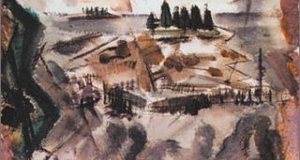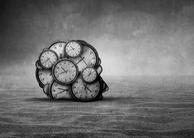John Rawls, Robert Nozick, and the Difference Principle: Finding Common Ground
By
2011, Vol. 3 No. 04 | pg. 1/1 A large portion of Robert Nozick’s Anarchy, The State and Utopia is dedicated to refuting the theories of John Rawls. Specifically, Nozick takes issue with Rawls’ conception of distributive justice as it pertains to economic inequalities. Rawls wrote that economic inequalities should only be permitted if they are to the benefit of society, and especially if they are to the benefit of its least advantaged members; this has come to be known as “the difference principle”. Nozick believed that no one had any business “permitting” economic inequalities at all. To Nozick, as long as economic inequalities arise from voluntary exchange, they cannot be unjust. In chapter 7 of Nozick’s book, he gives an example of a world where Wilt Chamberlain becomes very rich through voluntary exchange (Nozick 160-162). The purpose of the example is to demonstrate how we can not govern economic inequality in the way that Rawls would apparently suggest without sacrificing a large amount of liberty. Much focus has been given to the enormous degree to which these two views apparently differ, but I believe that a closer examination of the Wilt Chamberlain argument shows that the two philosophers differed less in their concept of justice and goodness than is usually perceived. Contrary to popular belief, the Wilt Chamberlain example shows how voluntary exchange of the kind advocated by Nozick can lead to distributions of wealth that conform perfectly to Rawls’ criteria for economic inequalities. In order to fully explore how Nozick’s Chamberlain argument and Rawls’ difference principle interact, it is necessary to restate the example with some aspects more explicitly defined than Nozick originally made them. For simplicity, suppose that society’s wealth is initially distributed with perfect equality. This distribution will be called D1. Suppose that there are ten members of society, and each of these ten members is one of three types: Wilt Chamberlain, a basketball fan, or a non-basketball fan. Under D1, each member of society has $10. This is what D1 looks like:
As in Nozick’s example, suppose that the basketball fans voluntarily begin to pay Wilt Chamberlain money to play basketball. For this iteration of the example, make it $2.50. The result is D2, a new distribution where Wilt Chamberlain is much richer than anyone else in society.
D2 is clearly less equal in terms of personal monetary wealth than D1: Wilt Chamberlain is at least twice as rich as any other member of society, the basketball fans have become the poorest, and society as a whole appears no better off. If inequality is inherently a bad thing, then society has become worse off. On the face of it, D2 appears completely inconsistent with Rawls’ criteria for allowing economic inequality, and should not be allowed by anyone with a Rawlsian perspective. It is my view, however, that D2 is perfectly consistent with Rawls, and particularly with the difference principle. Monetary transactions are not zero-sum. This is the key to understanding the harmony between Nozick, Rawls, and Wilt Chamberlain. When you buy a bagel from Tim Hortons’, you value that bagel at least a little bit more than you value the $1.79 that you spent to get it. This is self-evident: if the bagel was worth less than $1.79 to you then you would not buy it, and if it was worth exactly $1.79 then you would be indifferent (and unlikely to wait in a line). It is further evident if you imagine that immediately after purchasing the bagel, I come up to you and offer to buy it from you for $1.79, or even $1.80. If you are normal, you will say no. A price—$1.79 in the case of a bagel, or $2.50 in the case of tickets to see Wilt Chamberlain—is nothing more than an agreed upon point somewhere in between what the buyer is willing to pay and what the seller is willing to accept. In other words, all voluntary exchanges must be beneficial to both parties, because each party receives something that they value a little bit more than what they gave up. D2 did not arise by the basketball fans simply transferring their personal wealth to Wilt Chamberlain. They traded it in exchange for something that they valued more than they valued the $2.50 that they gave up to get it. I will call the thing that the basketball fans received in exchange for their money “basketball utility”. Now, different people like different things to differing degrees, so without asking them, it is impossible to tell precisely how much basketball utility was gained by each basketball fan. However, the value of each of their basketball utility must exceed $2.50—otherwise they would not have traded $2.50 for it. By including basketball utility in the analysis, we can draw a new picture of D2:
This new picture of D2 is startlingly different from the original. The first, and most striking new feature is the increase in the overall wealth of society once basketball utility is accounted for. Making Wilt Chamberlain richer by $10 made society as a whole richer by at least $10. The first component of the difference principle is that economic inequality should be to the overall benefit of society, and the new picture of D2 certainly satisfies that condition, since society now has $110 rather than $100. The second component of the difference principle is that the inequality should be to the greatest benefit of the least advantaged. Whether the new picture of D2 satisfies that condition is a little bit more challenging to ascertain. The first step would be to try to determine exactly who the least advantaged are. One might argue that the basketball fans are the worst off, since they have the least money. However, assuming that basketball utility is a source of happiness, they are also among the happiest—happier than the non-basketball fans. So perhaps the non-basketball fans are worse off since they are now poorer relative to Wilt Chamberlain, and have not gained any basketball utility. If that is the case, perhaps we should tax Wilt Chamberlain and redistribute some of his vast riches to the non-basketball fans. But upon closer reflection, that doesn’t seem right either. Since they have more money than the basketball fans, the non-basketball fans have more opportunity to consume things that they like in the future. If Wayne Gretzky comes around, the non-basketball fans have a greater opportunity to gain hockey utility than the basketball fans do. Furthermore, taxing Wilt Chamberlain might cause him to raise his price. This would redistribute money from basketball fans to non-basketball fans, or in other words, from the poorer to the richer. To get around that, we might decide to tax Wilt Chamberlain and prohibit him from raising his price. But this eats into his profits, which could encourage him to play less basketball. If he plays less basketball then he produces less basketball utility—again, a loss to basketball fans and a net loss to society. Taxing Wilt Chamberlain and prohibiting him from raising his price and prohibiting him from playing less basketball is forced labour, and I believe both Nozick and Rawls would agree that forced labour is undesirable. There is simply no way that society could do better, under the constraints of this admittedly simplistic model, than to allow Wilt Chamberlain to become rich. The economic inequality of D2 is perfectly consistent with the difference principle. One might object to this argument on the grounds that it is ridiculous. Basketball utility is imaginary, the arguer would argue, and imaginary things have no place in the very real business of distributive justice. This argument is simply nonsense. Basketball utility is the very real thing that people exchange money for when they buy basketball tickets (though, it is not often called basketball utility). It is completely true that the basketball fans must value the basketball utility more than the money they gave up to get it, and that mutual gains are made from the trade. This is a great deal clearer if we imagine that Wilt Chamberlain does not produce basketball utility, but instead produces toasters. It would be absurd to say that when someone buys a toaster, they are not exchanging their money for something of value. But no one buys a toaster just to own a toaster. They buy it to own the utility that comes with owning a toaster. I would dub this “toaster utility”, but it already has a name: toast. Those who love toast buy toasters because they value the toast more than they value the money that the toaster costs. Toast lovers gain and toaster-makers gain, and society is better off as a whole than it would be if such gains were not allowed. In the case of an especially skilled toaster-maker, inequalities of wealth could and would arise, and they may indeed be staggeringly large. Nonetheless, just as Wilt Chamberlain got rich by increasing society’s wealth from $100 in D1 to $110 in D2, toaster-makers would not get rich unless they increased the overall wealth of others. The great irony of the Wilt Chamberlain example as a repudiation of Rawls is that it shows that Rawls and Nozick really are after the same ends. Rawls saw the importance of liberty, but he also saw the tragedy of inequality, particularly as it pertains to extreme poverty. To Rawls, it is unconscionable that some should be born into a life of misery and poverty while others enjoy great wealth without lifting a finger. To Nozick, the unconscionable thing is that anyone should feel the justified in appropriating property that is rightly entitled to someone else. The great thing about the Wilt Chamberlain example is that it distills both of these views down to the underlying logic, and reveals how in essence, Rawls and Nozick were pursuing different means to the same end: a world where inequalities are to the benefit of all. Nozick draws a line between “end-result” principles and “historical principles” (153-155). His entitlement theory is what he calls a historical principle: a principle that is not concerned with what end-state emerges, as long as the method by which that end-state is reached voluntarily and with no loss of liberty. If the road to the end result follows the entitlement principle—that is, if all holdings of wealth arise from voluntary exchange—it is, to Nozick, just. Rawls is concerned with end results. If there are large inequalities, and if there is poverty, then whatever road that led to the end-state must be unjust. Examination of the Wilt Chamberlain example shows how Nozick’s entitlement principle is the road to Rawls’ end result. If society follows the entitlement principle, then the only true inequalities that can arise are ones beneficial to society. Granted, in some cases, for instance where one person accumulates a large amount of wealth and bequeaths it to a rotten brat, inequalities might seem unjust, but to Nozick that is a small price to pay for a system that makes society richer as a whole. Perhaps the reason that Wilt Chamberlain wants to become rich is so that he can leave a large inheritance to his lazy, spoiled children, but that does not negate the fact that his becoming rich made society even richer. Other than inheritances or gifts though, the only inequalities that may arise under Nozick’s system come from voluntary exchange, and as I have demonstrated, inequalities that arise through voluntary exchange must be to the benefit of society. Rawls’ great insight was that economic inequalities can be to the benefit of society and the poor, and that the desirable inequalities do just that. Nozick’s was that the way to make those happen is through liberty and voluntary exchange. Taken together, Rawls and Nozick present a very optimistic view of the future. References Nozick, Robert. Anarchy, State, and Utopia. New York: Basic, 1974. PDF. Wolff, Jonathan. An Introduction to Political Philosophy. Oxford: Oxford UP, 2006. Print. Suggested Reading from Inquiries Journal
Inquiries Journal provides undergraduate and graduate students around the world a platform for the wide dissemination of academic work over a range of core disciplines. Representing the work of students from hundreds of institutions around the globe, Inquiries Journal's large database of academic articles is completely free. Learn more | Blog | Submit Latest in Philosophy |


















